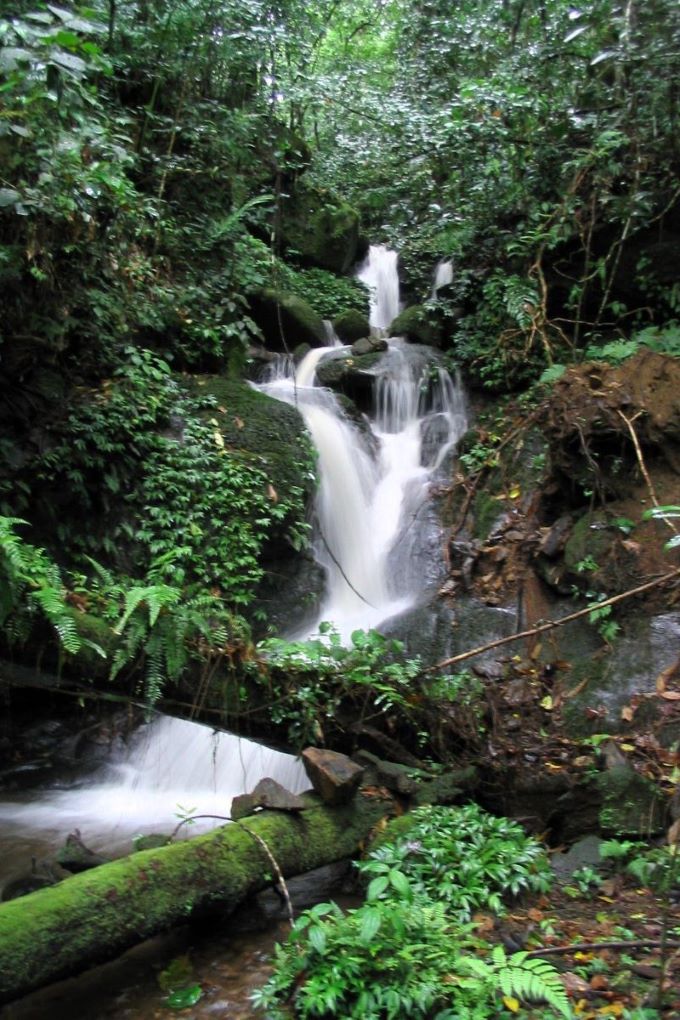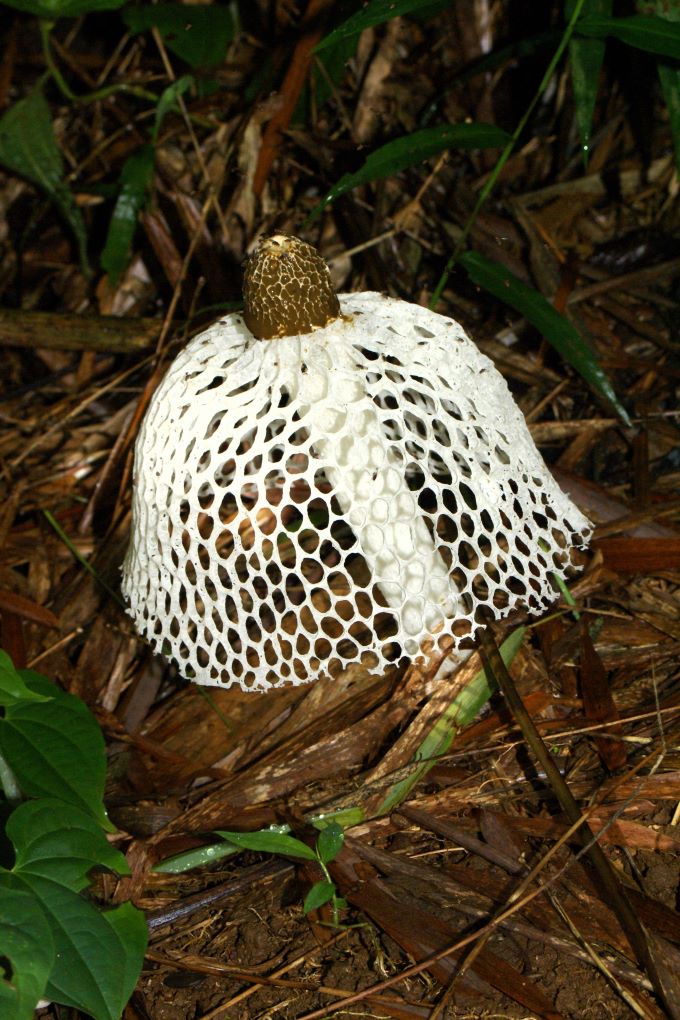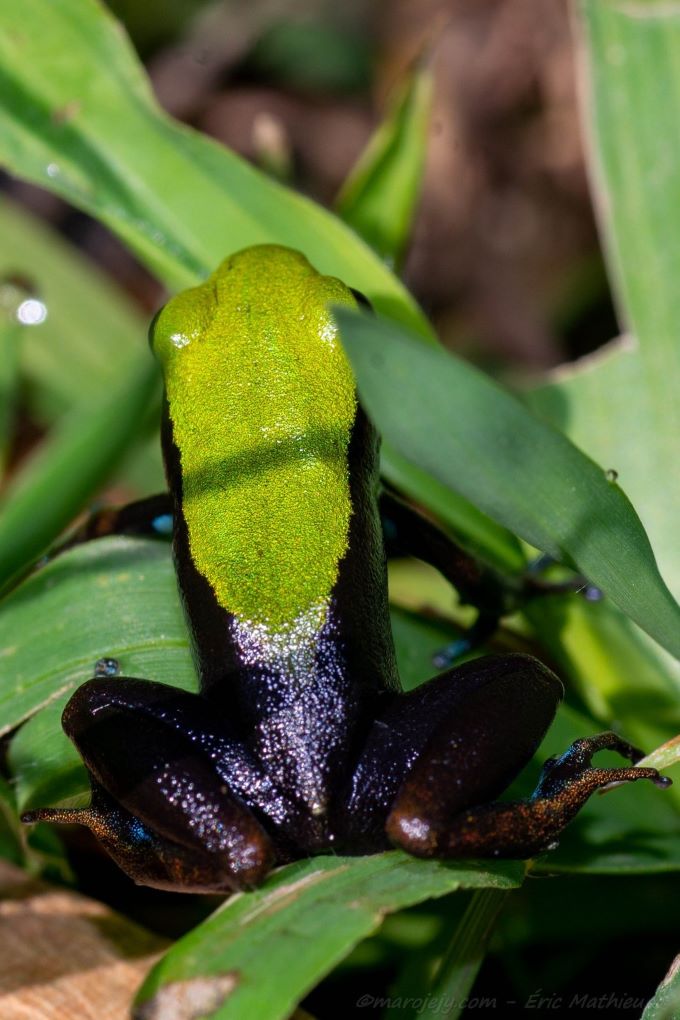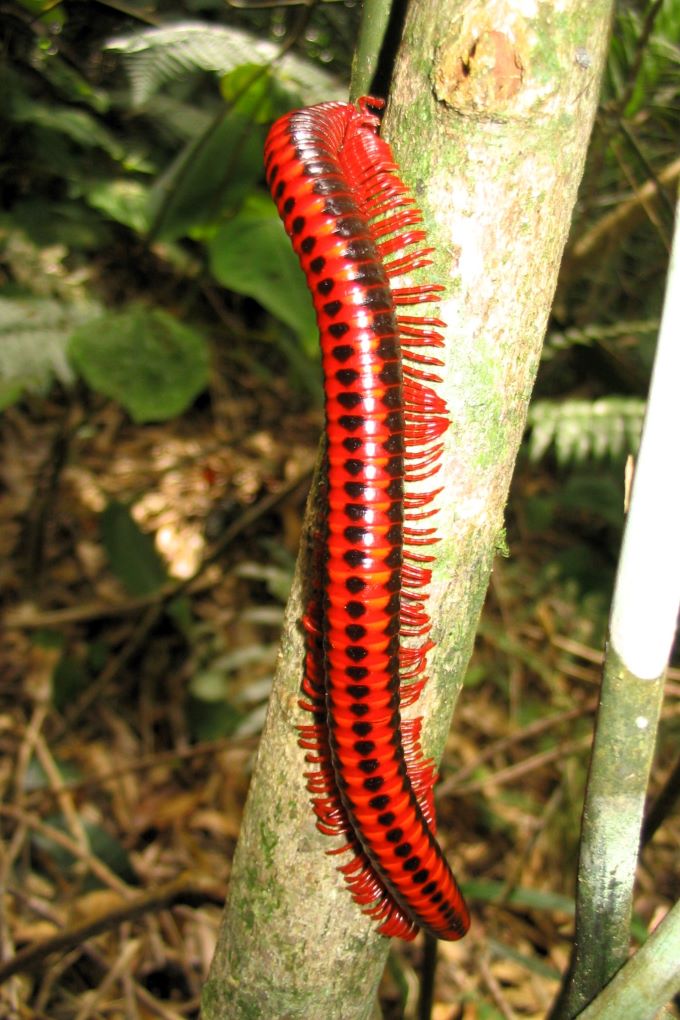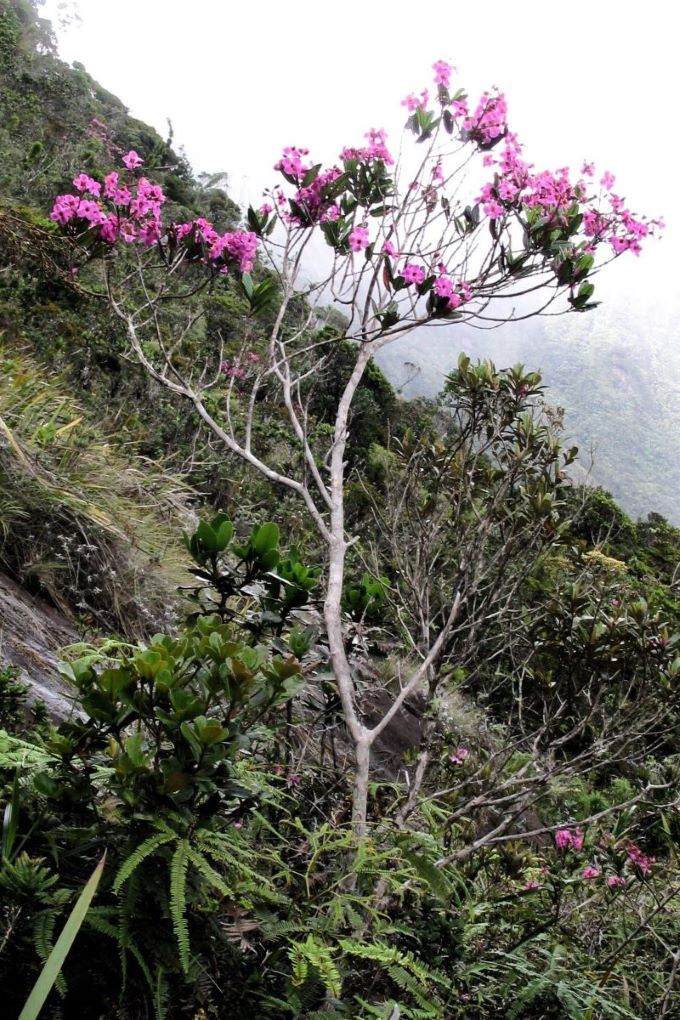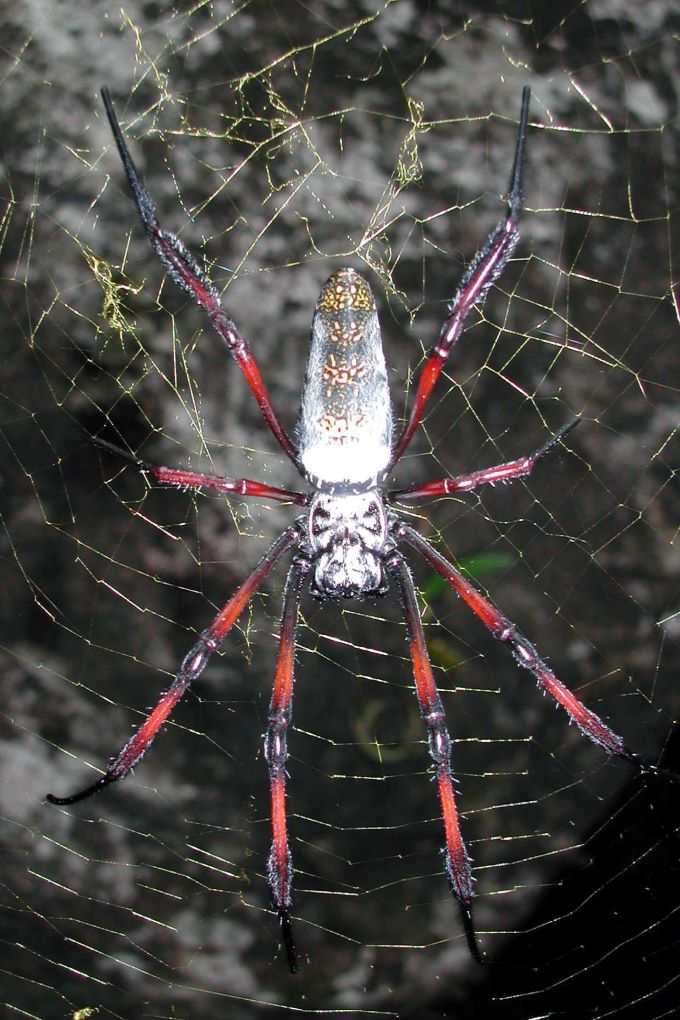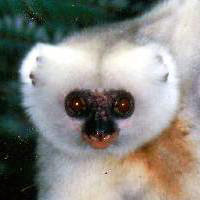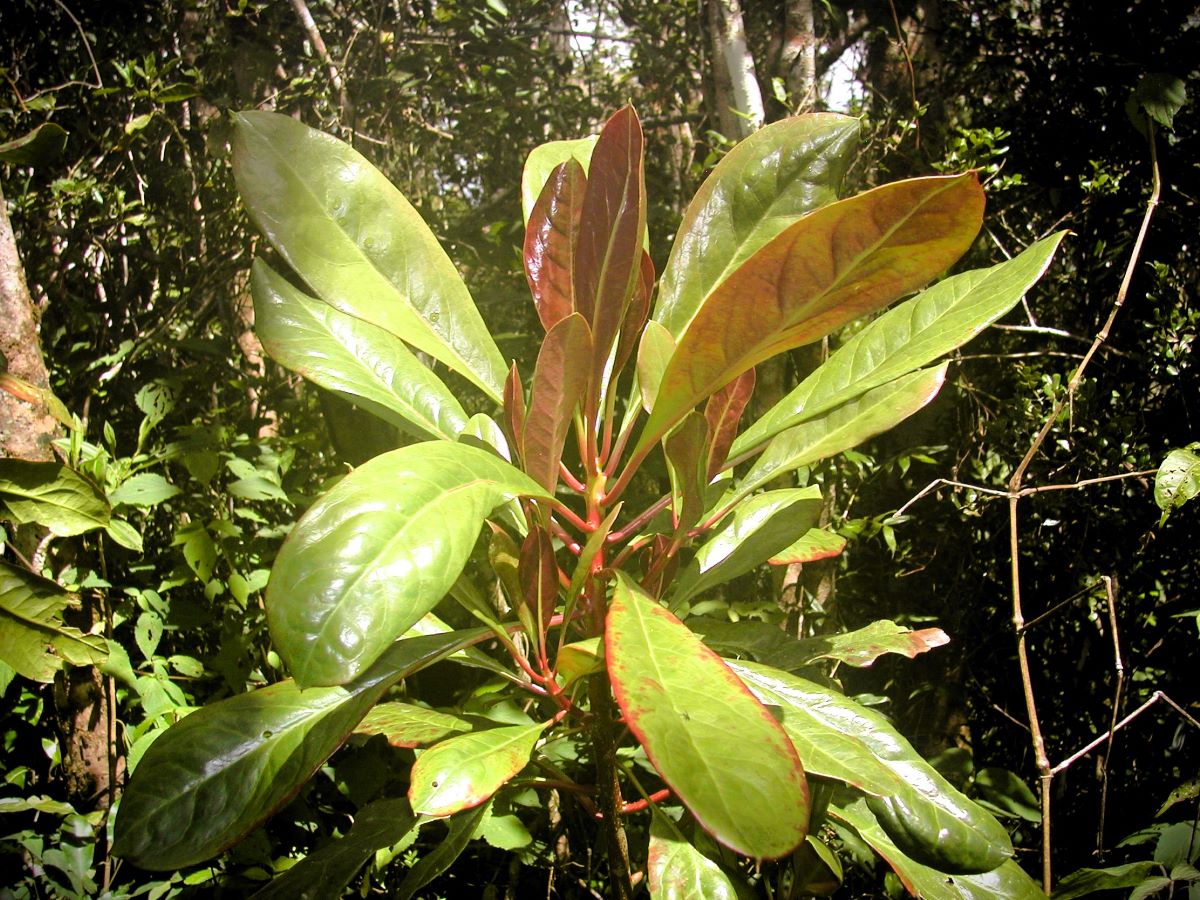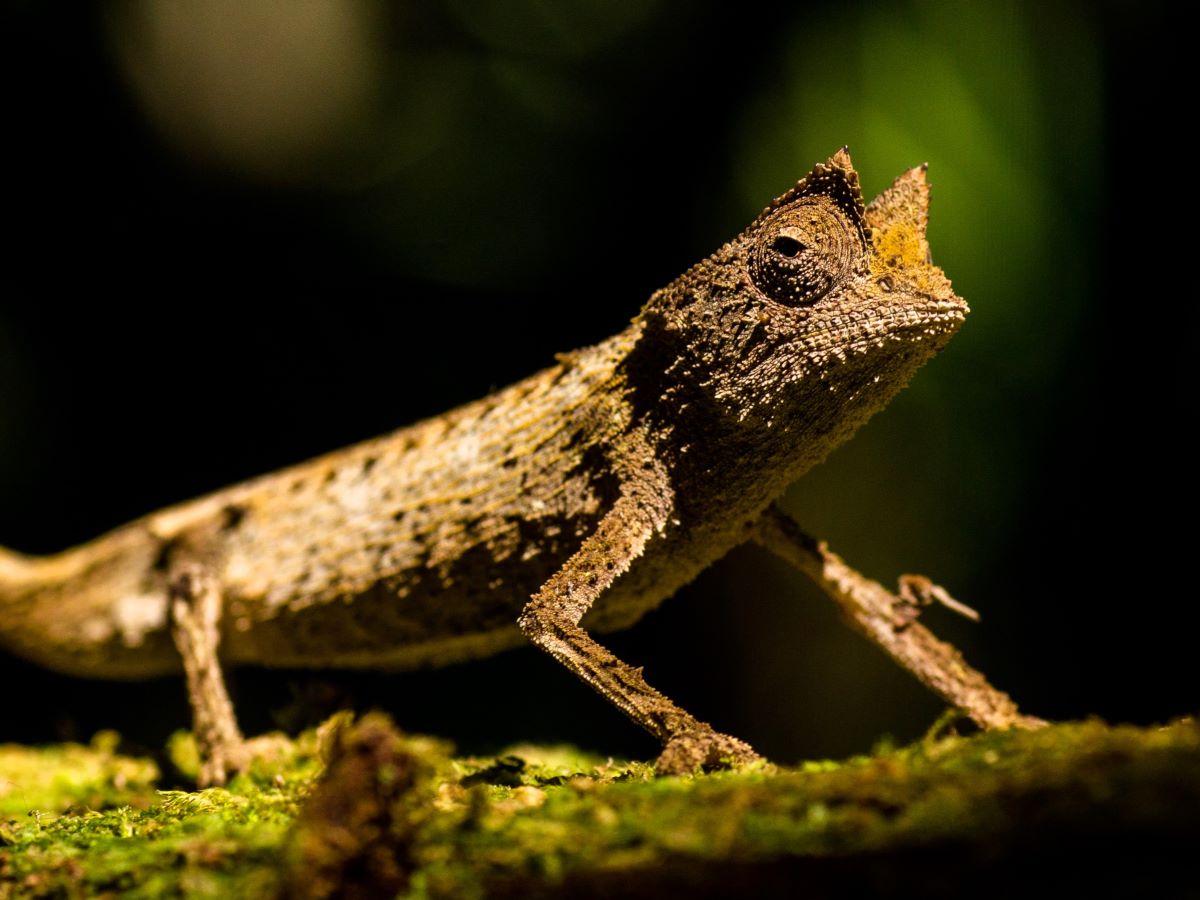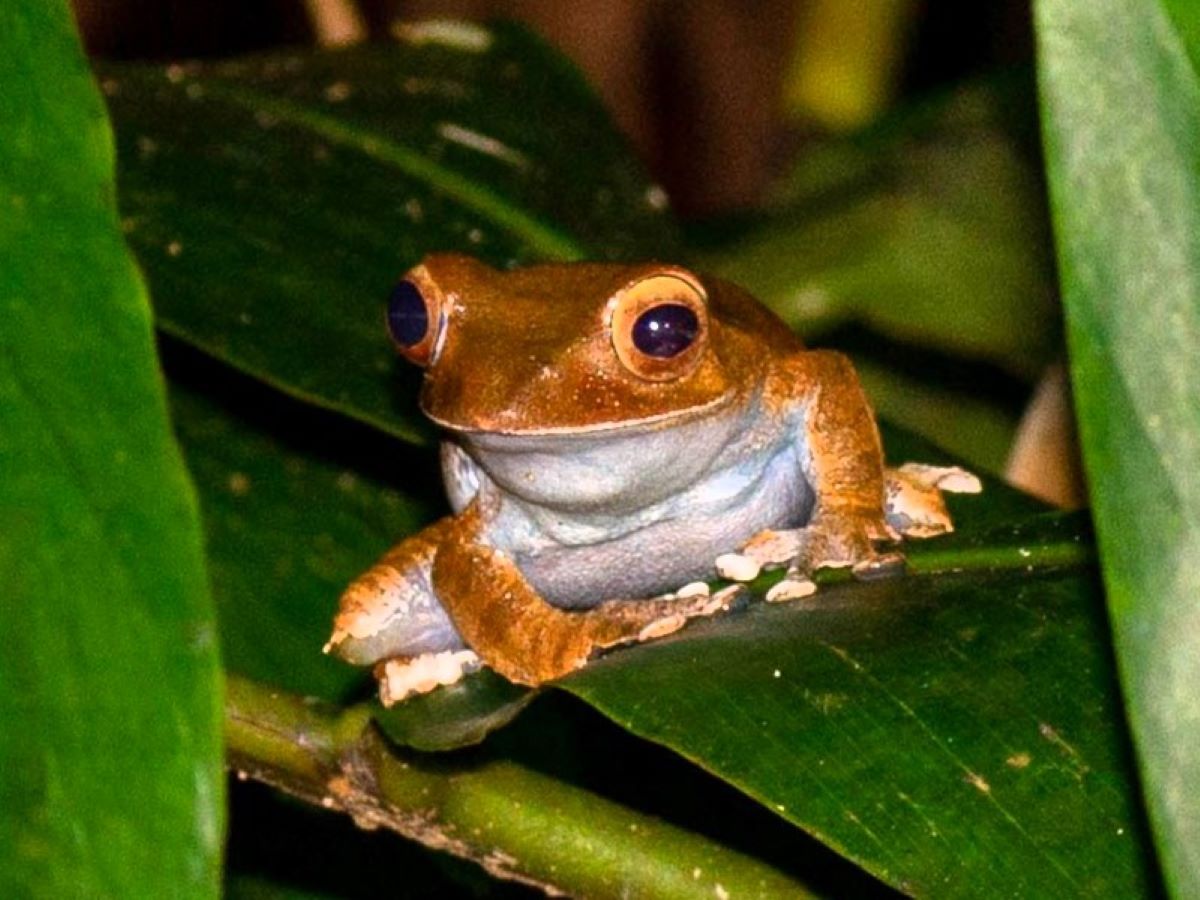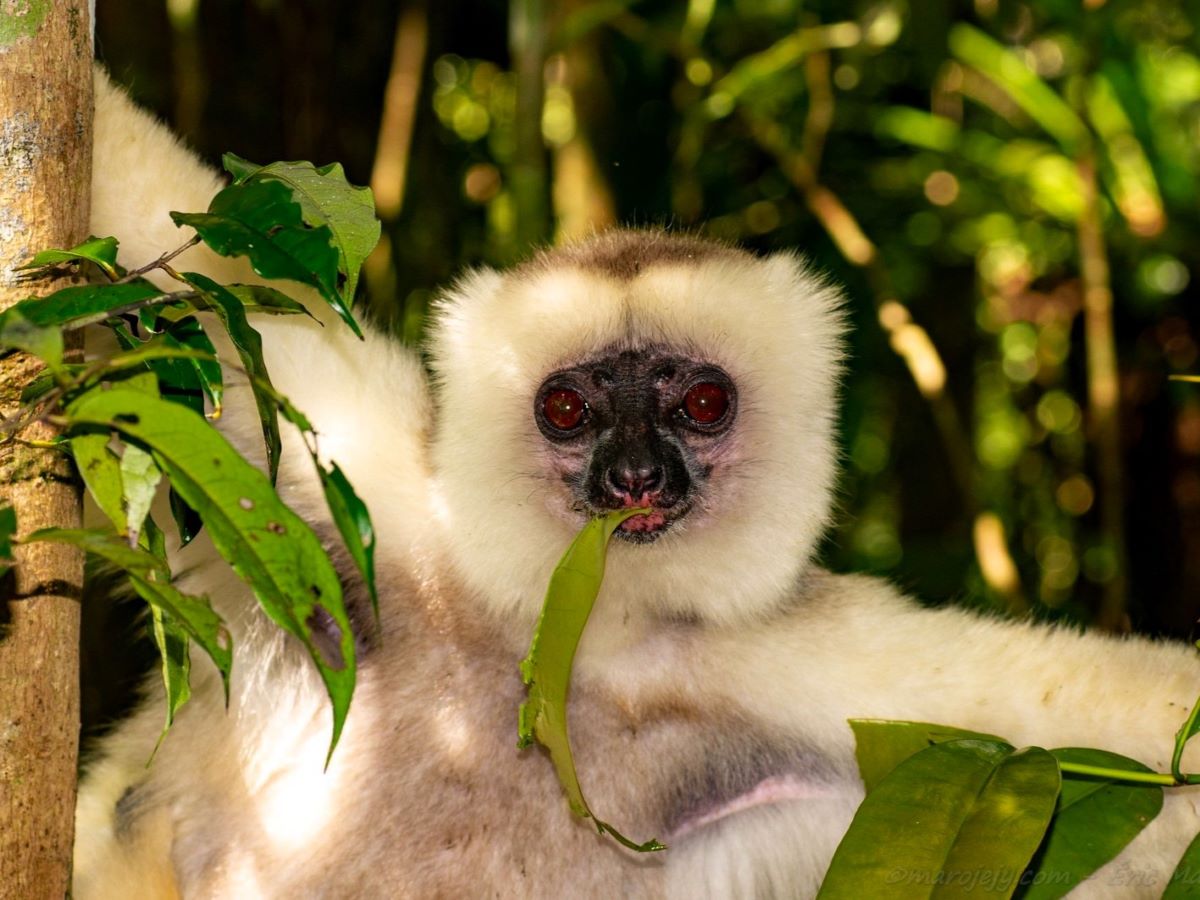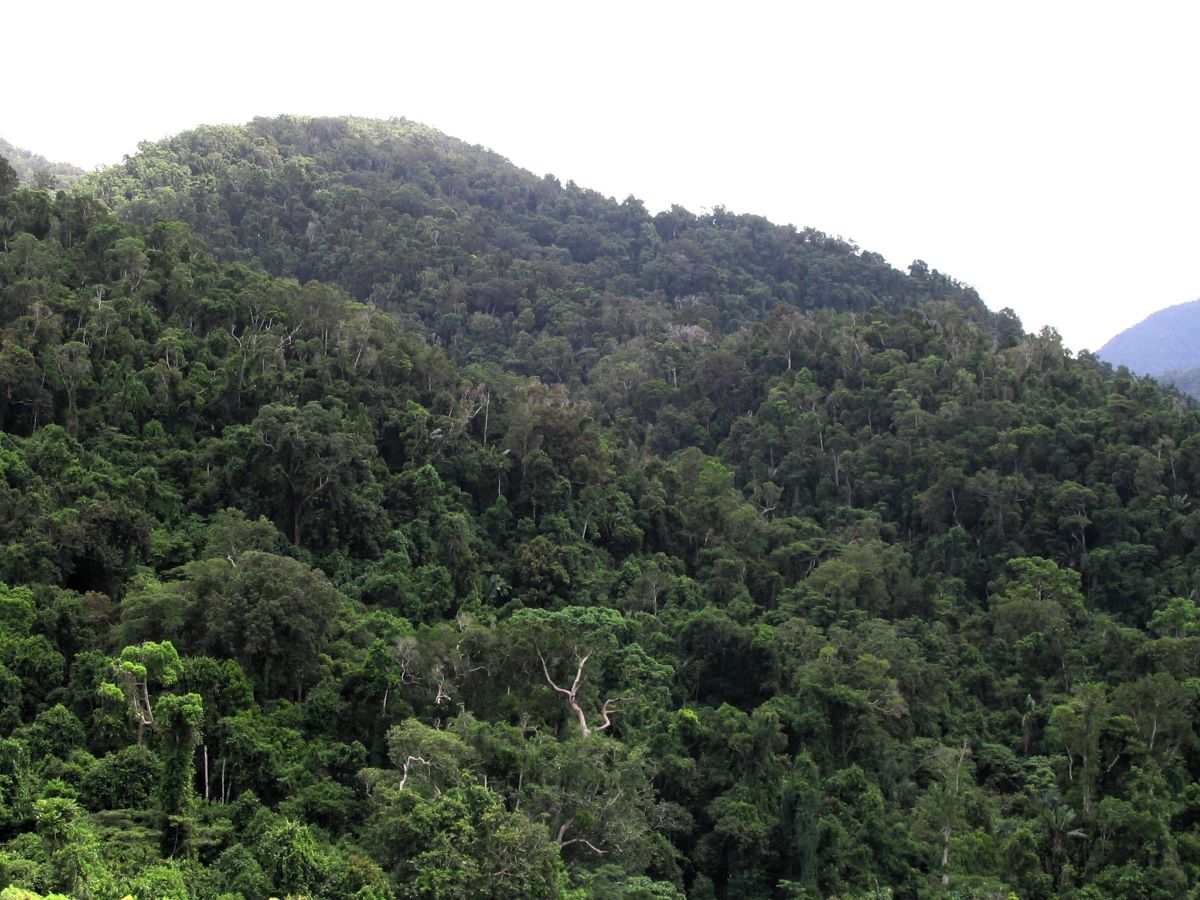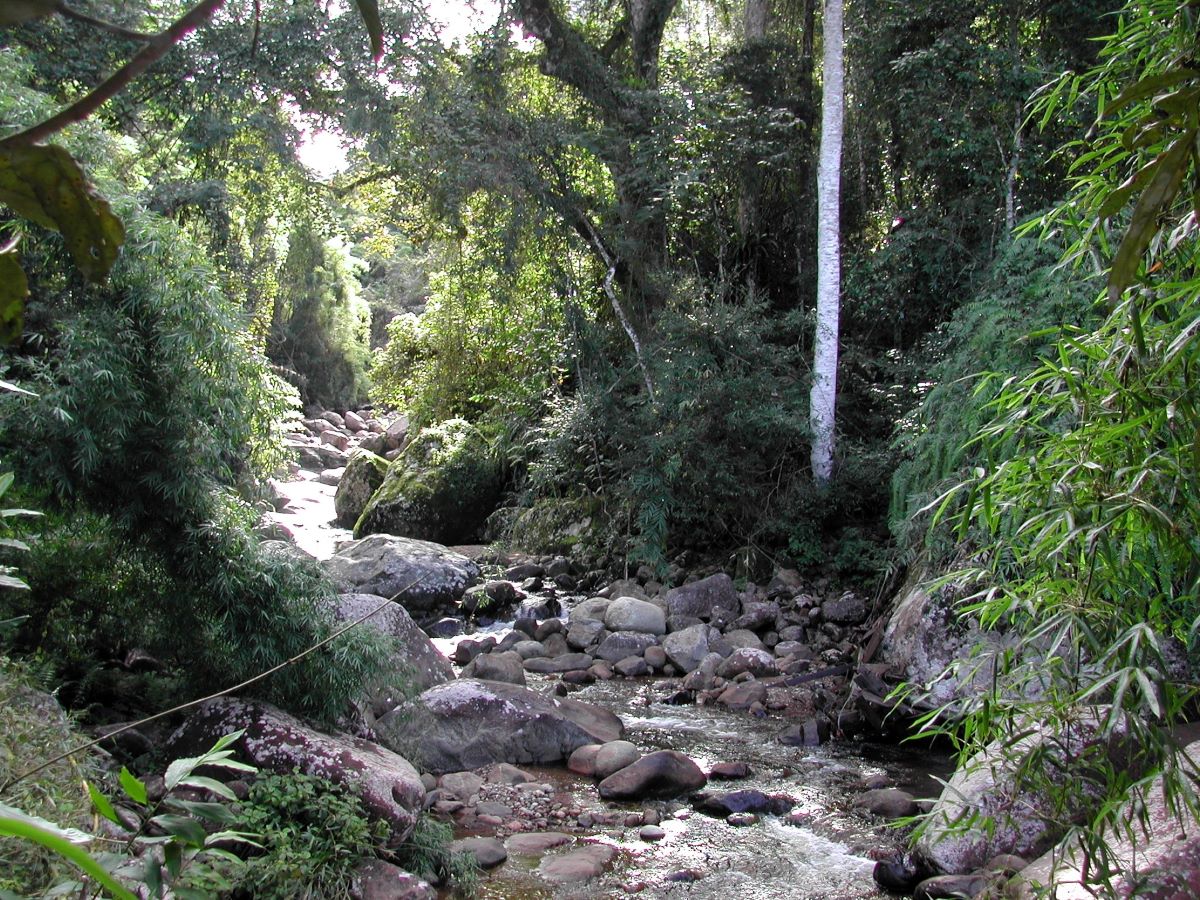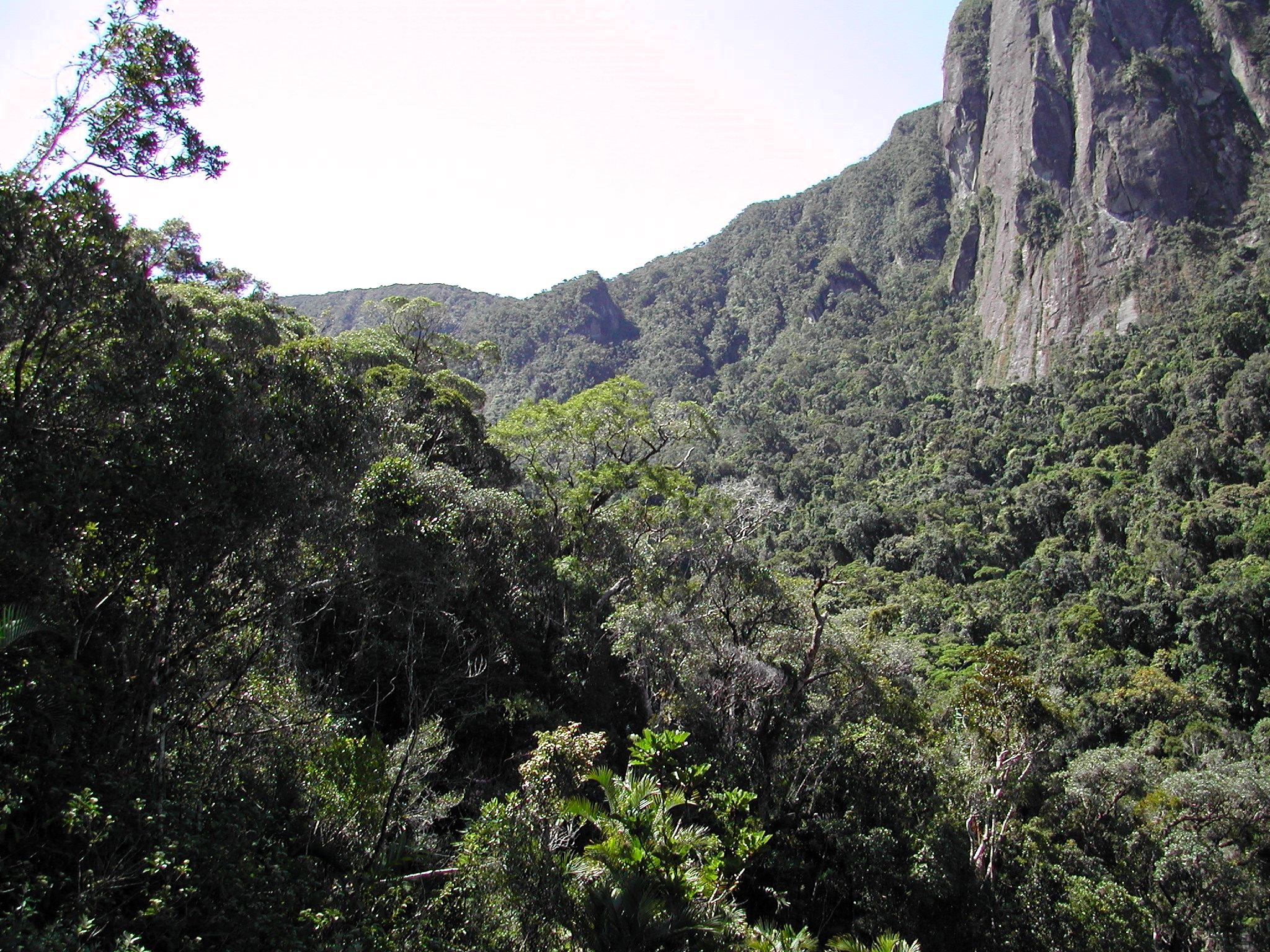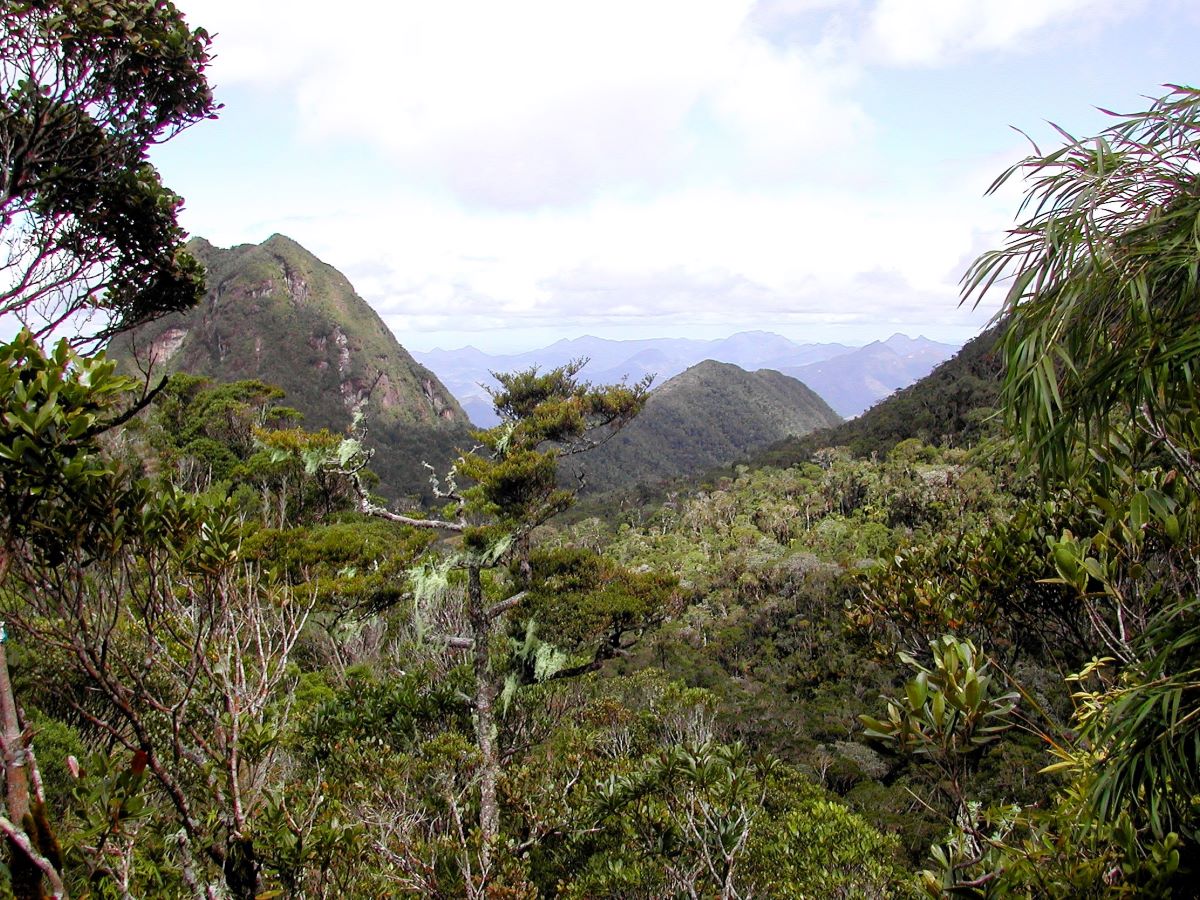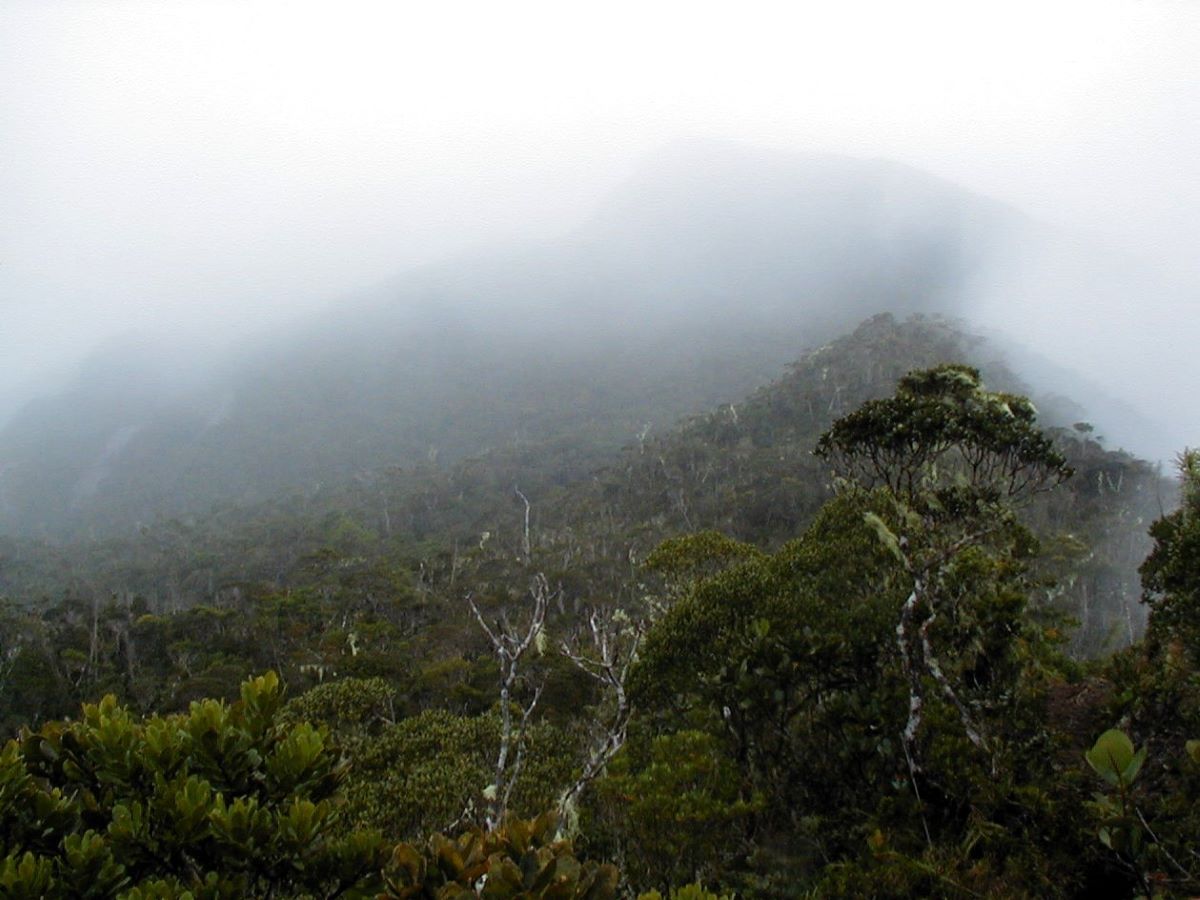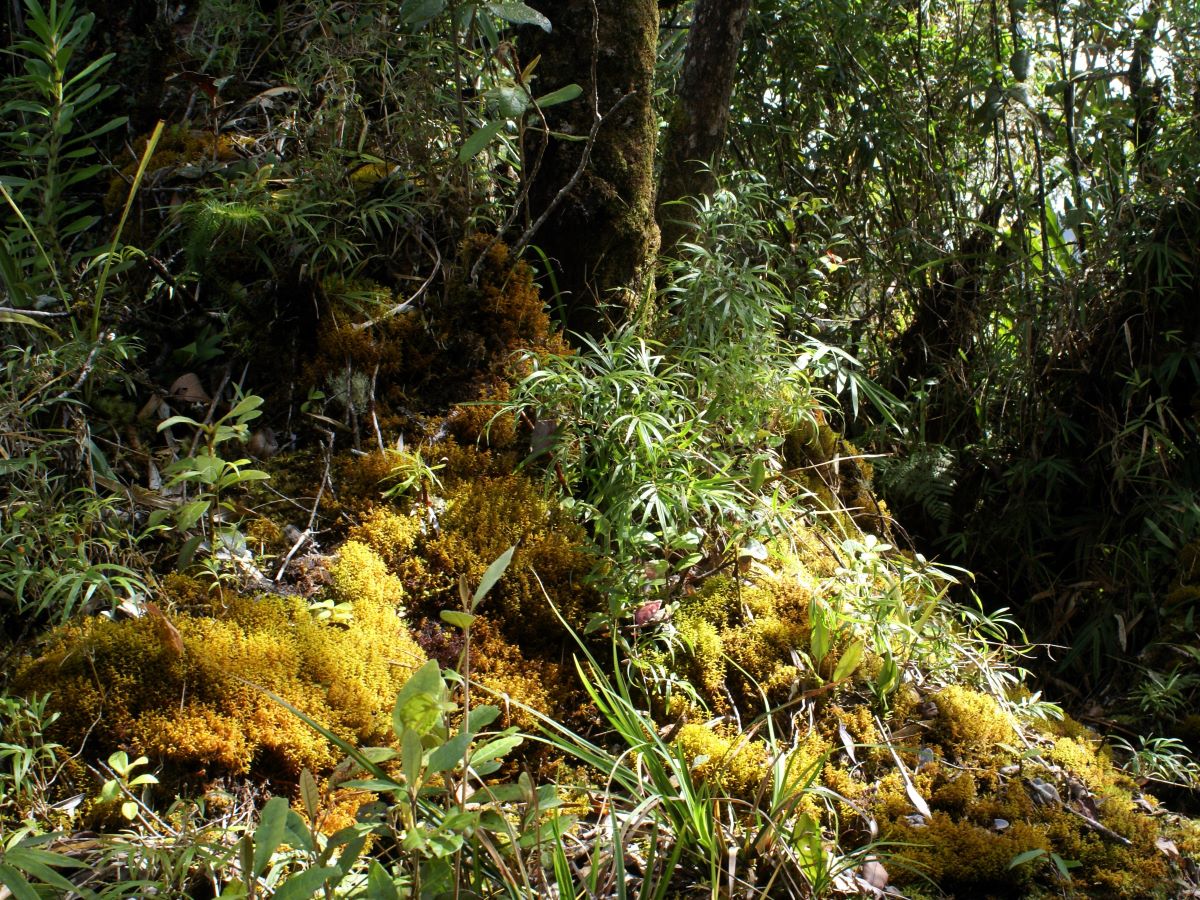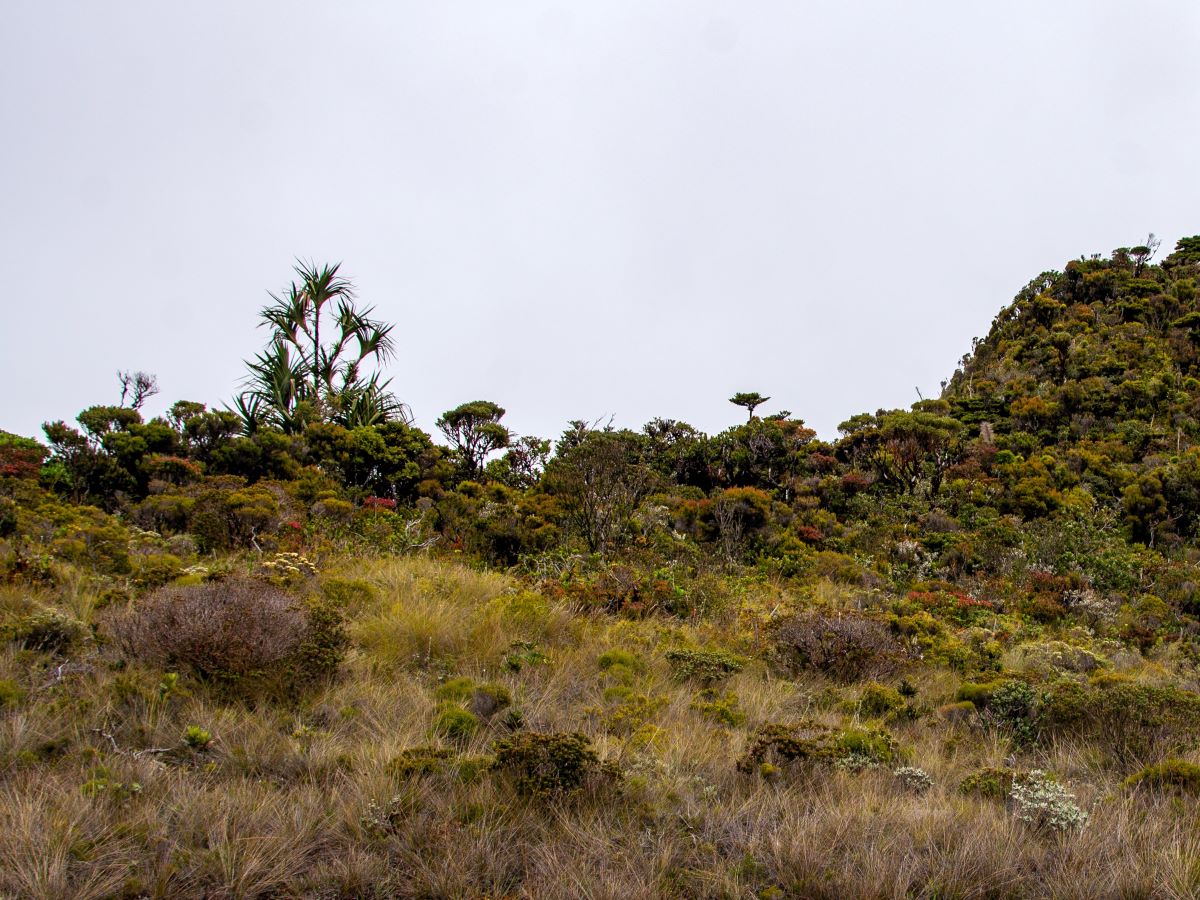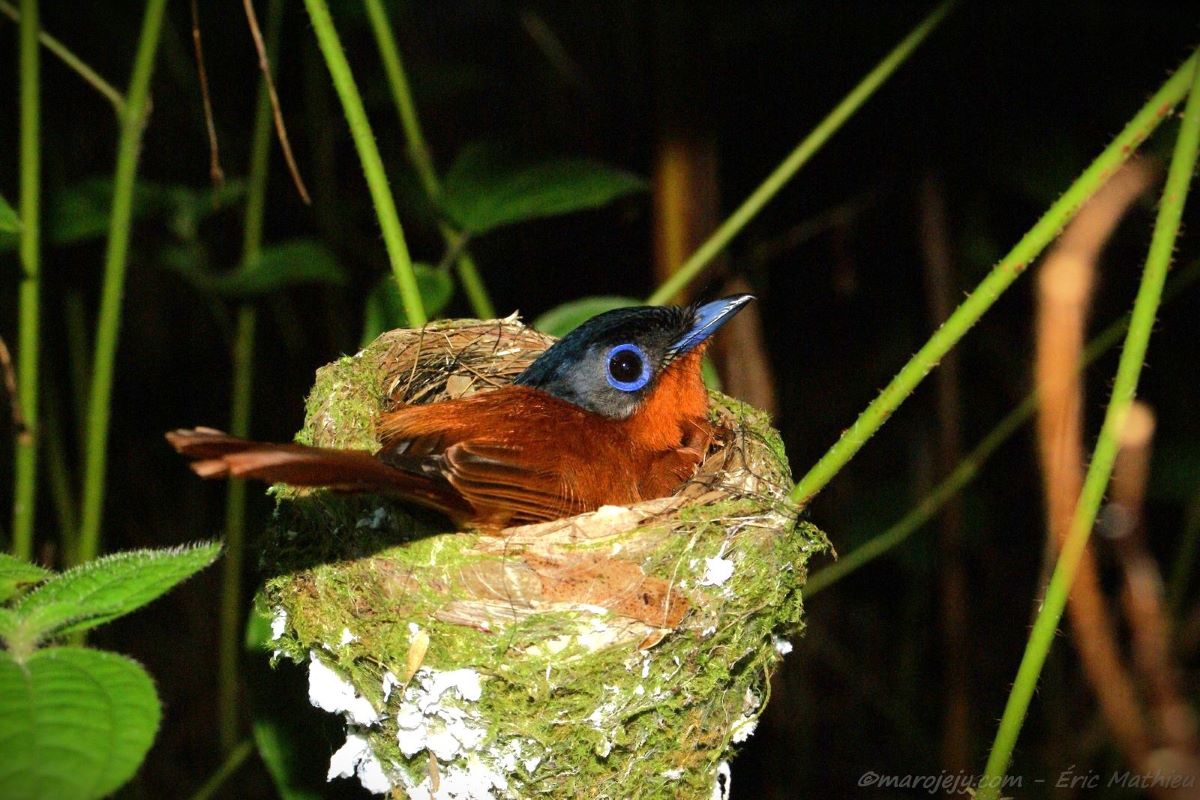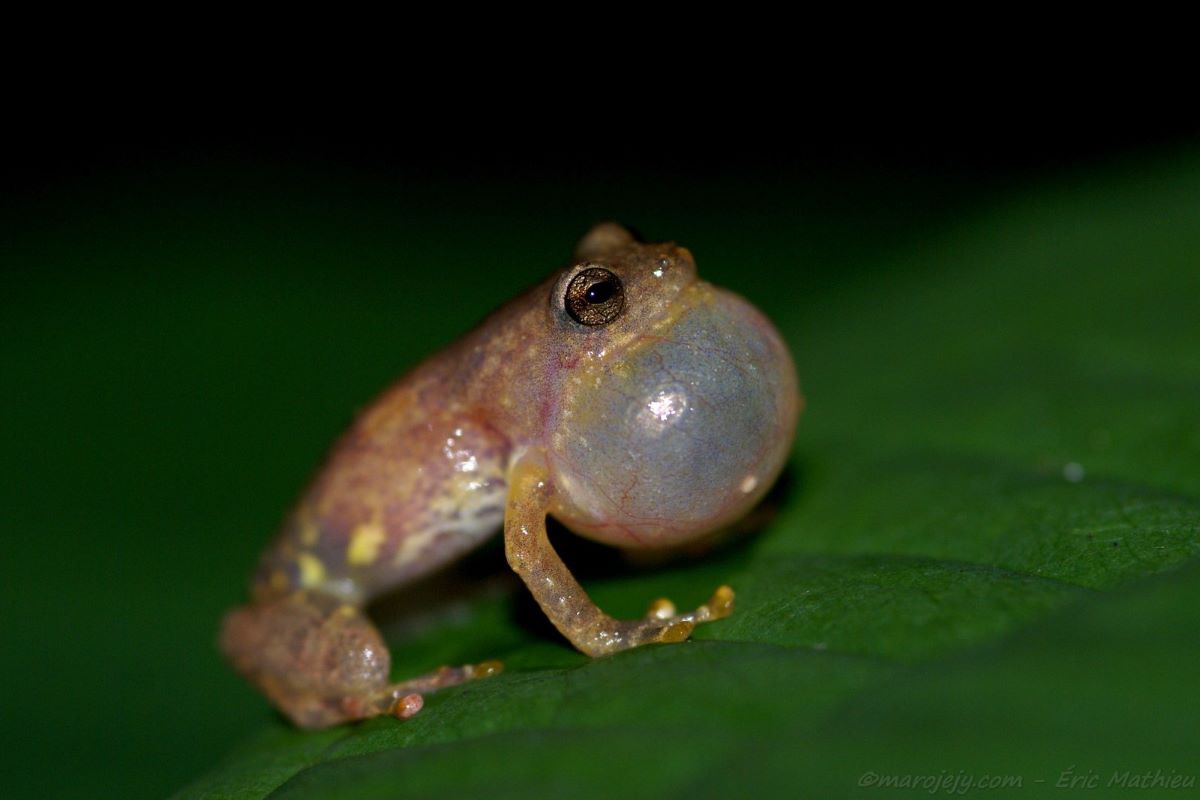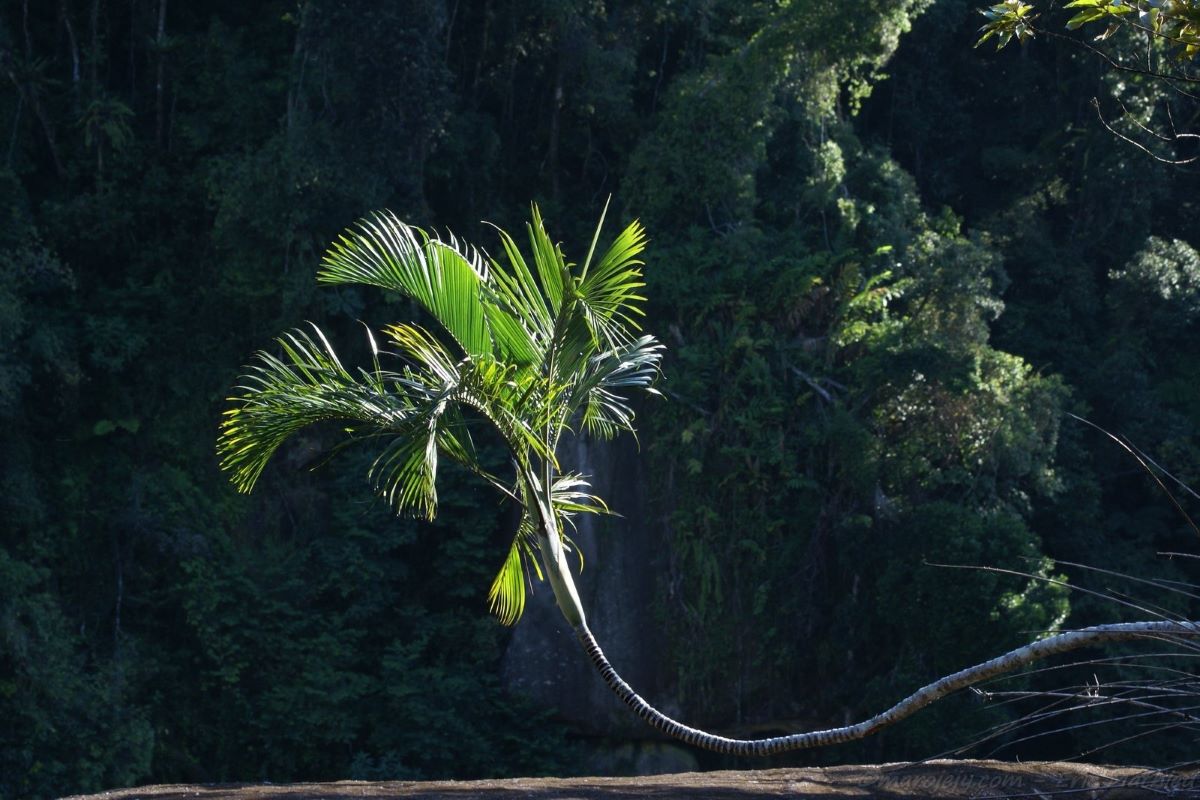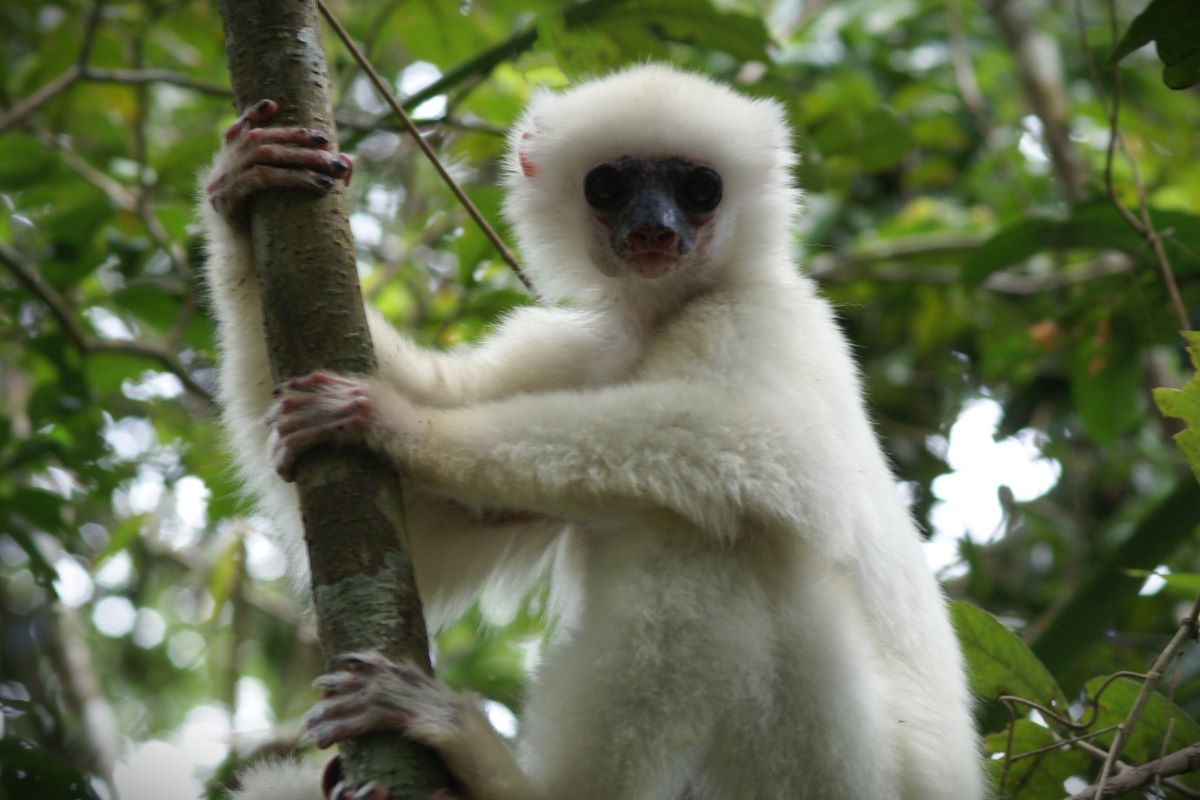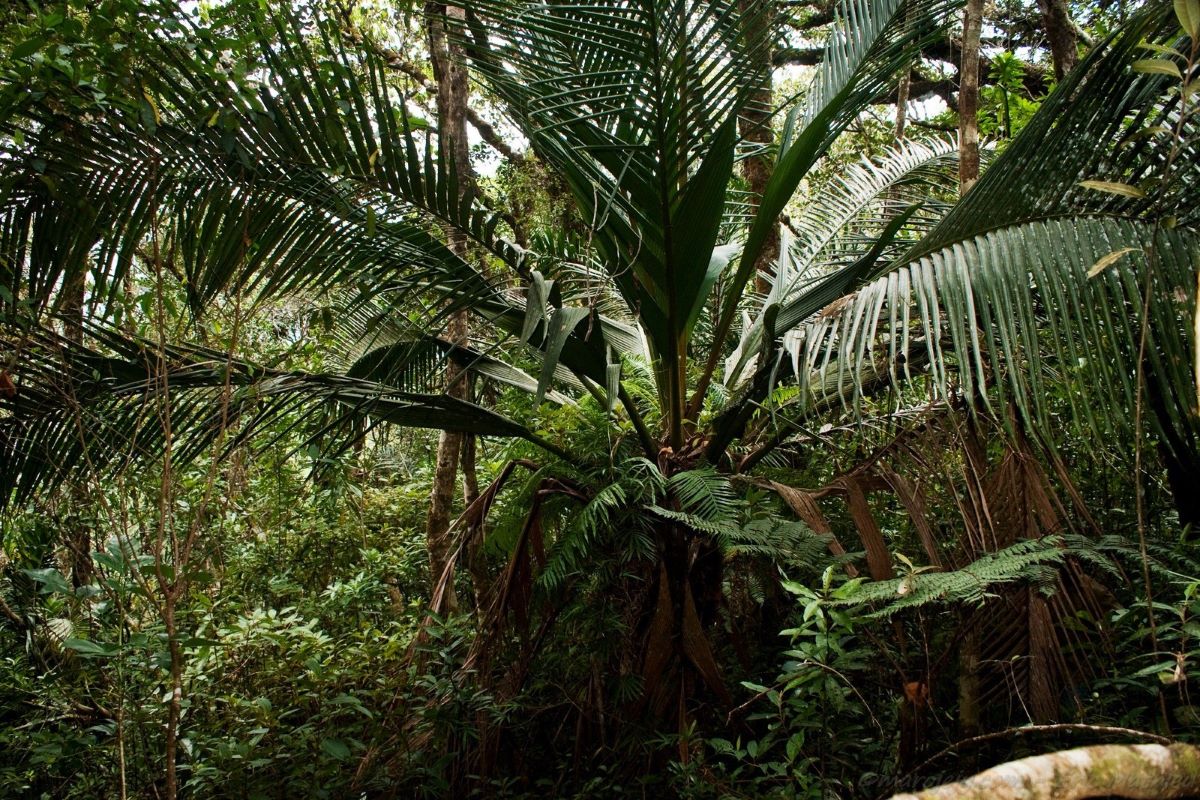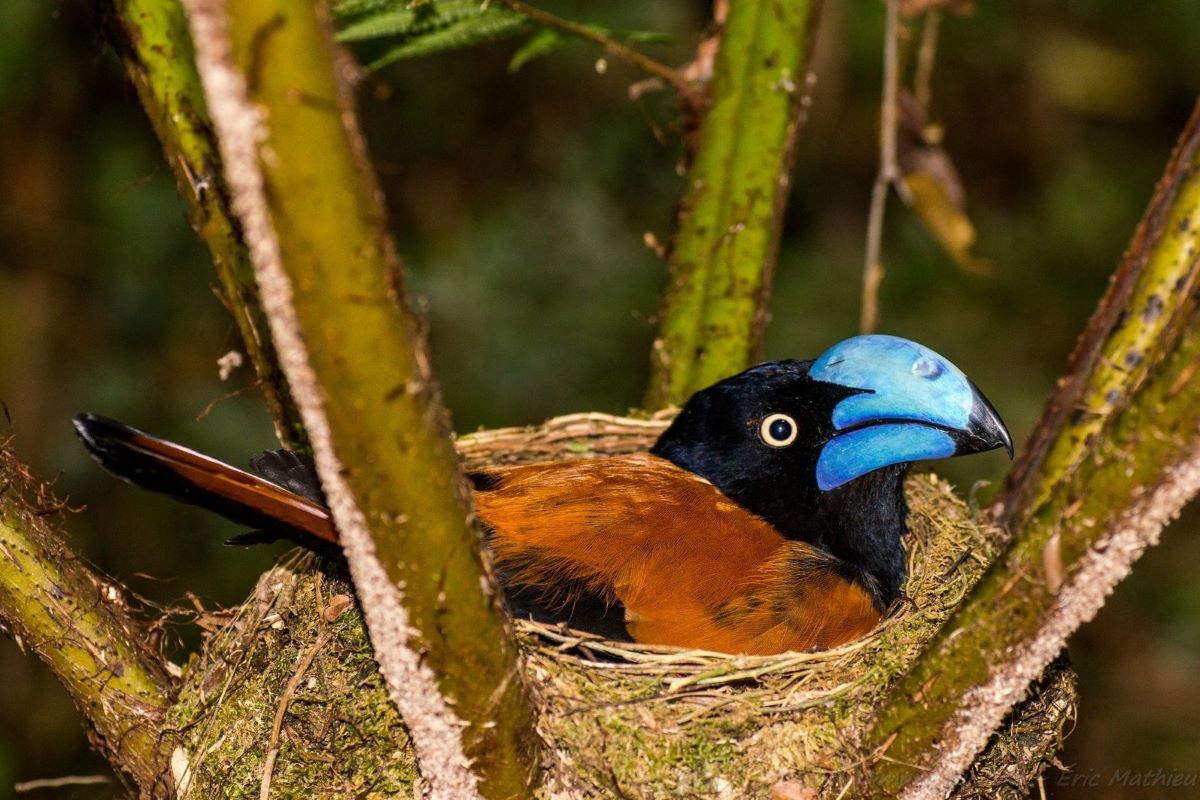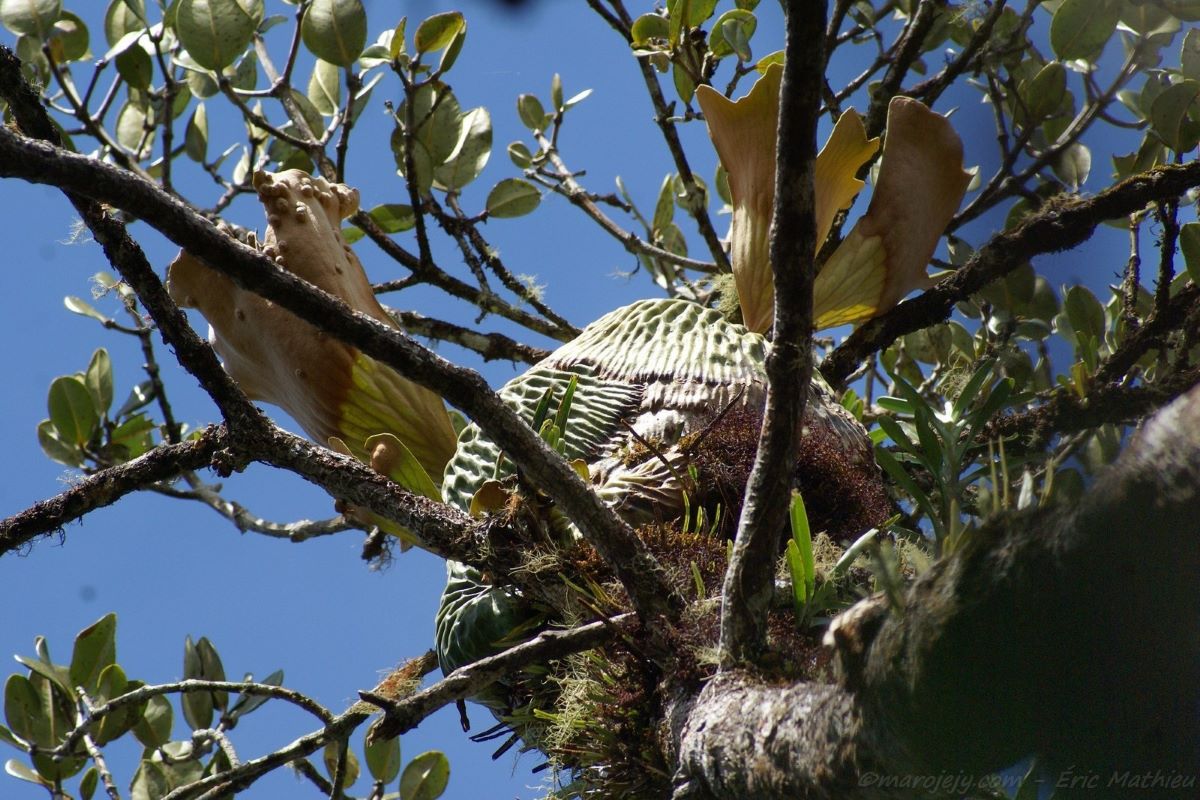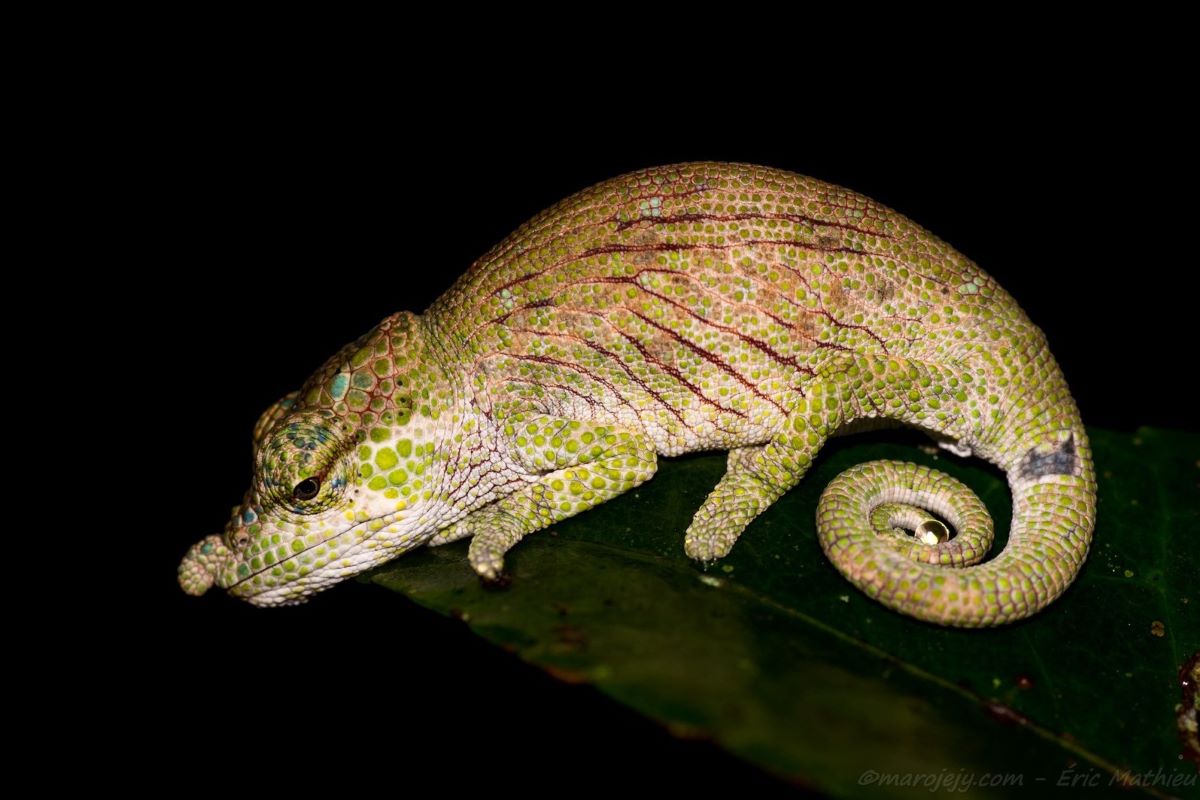The Biodiversity of Marojejy
1,302
Species of plants identified, 84 of which are endemic to Marojejy
84
Species of reptiles, more than any other park in Madagascar
74
Species of amphibians, many of which are endemic to Marojejy
12
Species of lemurs, including the critically endangered Silky Sifaka
Marojejy harbors a remarkably diverse set of plants and animals, many of which are endemic to the area. This is due primarily to the wide range of habitats found on these mountain slopes. Ninety percent of Marojejy National Park is covered in forests which are extremely varied and unevenly distributed. Many factors influence the distribution and structure of these forests, but the most important are the wide elevational span and the rugged topography seen in these mountains.
Elevation influences the air temperature, its daily fluctuations and the humidity levels, and all of these things in turn influence the growth and development of plants. In general, as one climbs in elevation in Marojejy, one encounters four basic forest types:
- Low-Altitude Evergreen Rainforest (below 800 m): Sheltered from strong winds and stimulated by consistently warm temperatures and abundant rainfall, these are dense evergreen forests with tall trees and many palms, ferns, and epiphytes. The canopy here is 25–35 m high. In disturbed areas, secondary growth consists primarily of bamboo, wild ginger and ravinala.
- Dense Montane Rainforest (800–1,400 m): Cooler temperatures and increasingly impoverished soils support increasingly smaller trees and shrubs. Here, the canopy is lower: only 18–25 m high. Shrubs, forest floor species, and epiphytes exploit the higher light levels, and the high humidity encourages the growth of mosses and ferns.
- High-Altitude Montane Cloud Forest (1,400–1,800 m): Lower temperatures further reduce forest growth, and the canopy is only 10 m high. Winds from the east envelop the high forest in heavy cloud cover. The trees are short, gnarled and stunted, and mosses and lichens drape their branches.
- High-Altitude Montane Scrub (above 1,800 m): Cool, windy conditions, lower rainfall, and thin, rocky soils limit vegetation to dense thickets of shrubs, which form an open, tundra-like cover. Here, one can find miniature palms and bamboos, as well as terrestrial orchids. This is the only montane scrub left intact in Madagascar; the vegetation on all other high mountain peaks has been altered and destroyed by fire.
The rugged topography creates an even greater variety of habitats. The east-facing slopes of Marojejy receive rain-bearing storms during the warm season, and the vegetation reflects the increased and more constant moisture levels throughout the year. On the west-facing slopes, however, there is a marked dry period which limits the growth rate of the trees and other plants. On ridge tops, high winds and poorer soil conditions also limit plant growth.
The abundant forest habitats of Marojejy shelter an exceptionally rich and unique flora and fauna. Inventories of some of the better-known groups of plants and animals confirm this. For example:
- More species of forest-dwelling birds are found in Marojejy than in any other single mountain site in Madagascar. One hundred twenty bird species have been recorded in the park or on lands immediately adjacent to it. Of these, 75 (63%) are dependent on the forest for a portion of their life-cycle. Every one of these 75 forest species is endemic to the Madagascar region. [Download current Bird List for Marojejy] [Download Birds of Marojejy brochure]
- Twelve species of lemurs have thus far been documented in Marojejy. Several of these species are endangered, primarily due to loss of forest habitat. One of the most critically endangered is the Silky Sifaka (or Simpona), a strikingly beautiful lemur in the indri family that has long, white, silky fur and is found only in the Marojejy–Anjanaharibe-Sud area. Less than a thousand Silky Sifakas are estimated to remain in the wild, and none at all exist in captivity. [Download Lemurs of Marojejy brochure]
- One hundred fifty-eight species of reptiles and amphibians have been inventoried in Marojejy to date. This represents more than a quarter of all the species known to exist in Madagascar and is the highest diversity of reptiles and amphibians currently known in any protected area in the country. Sixteen of these species are endemic to Marojejy. [Download Reptiles and Amphibians of Marojejy brochure]
- Thirty-five species of palms have been found in the Marojejy area. All but three of these are endemic to Madagascar, and seven are endemic to Marojejy. Several have very small populations and are critically endangered. [Download Palms of Marojejy brochure]
- Over 275 species of ferns have been inventoried in the rainforests of Marojejy to date. Eighteen of these are tree ferns, and seven are endemic to the area. Many have an extremely limited range and/or are very rare.
This, though, is only the beginning. Many large groups of organisms, such as the invertebrates, are still very poorly known. New species of plants and animals are discovered on nearly every scientific expedition that ventures into Marojejy. Some of these were previously unknown in Marojejy, some have never been seen anywhere else and are completely new to science, some are highly endangered. We have much, much more to learn about the remarkable biodiversity found here.
“Since 1988, at least 450 species of plants and animals have been named as new to science and for which at least one specimen per species cited in the description was collected on the Marojejy Massif…. No other protected area on the island [of Madagascar] has produced higher rates of new species descriptions when compared with Marojejy.”
Goodman, S.M. et al. 2023. Species new to science described from Marojejy since 1988: An extraordinary area of discovery at one of Madagascar’s most biodiversity rich protected areas. In A floral and faunal inventory of the Parc National de Marojejy: Altitudinal gradient and temporal variation, eds. S.M. Goodman & M.J. Raherilalao. Malagasy Nature, 17: 41-72.
